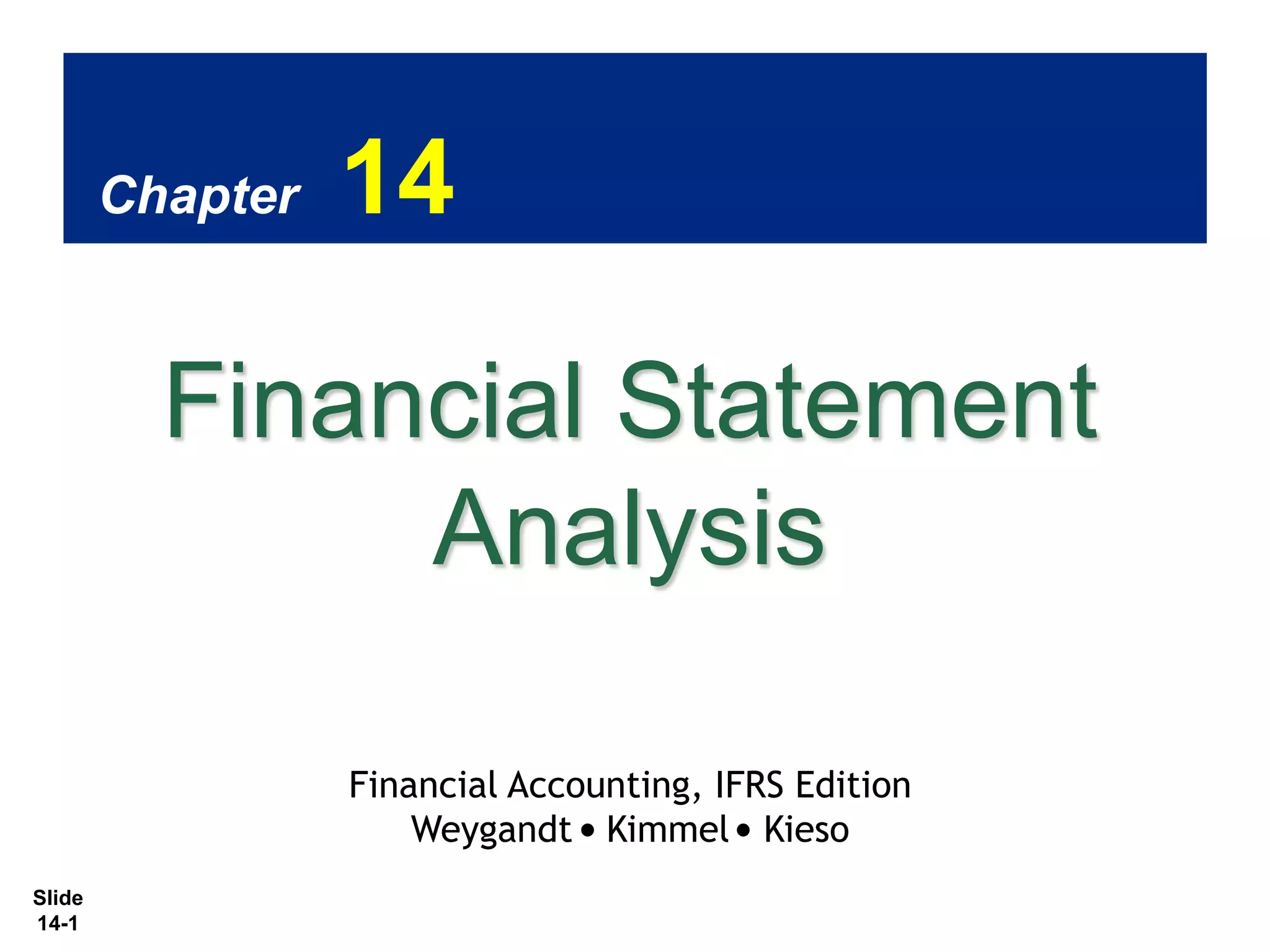This document discusses financial statement analysis. It covers the need for comparative analysis using tools such as horizontal analysis and vertical analysis. Horizontal analysis examines percentage changes over time while vertical analysis expresses financial statement items as a percentage of a base amount. The document also discusses various liquidity, profitability, and solvency ratios that are used in financial statement analysis, such as the current ratio, profit margin, return on assets, and debt-to-equity ratio. Specific examples are provided to demonstrate how to calculate and interpret these various analysis techniques and ratios.





















































